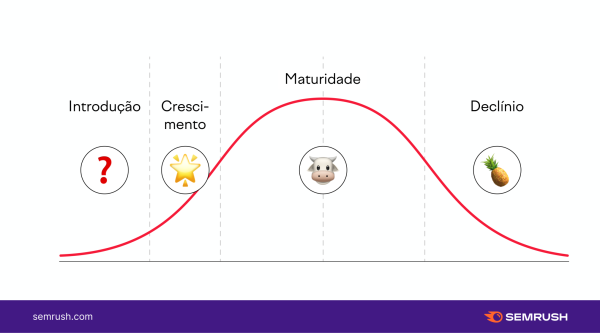
Pauliny Zito
Planner, copywriter, and copydesk
The Marketing Plan is a detailed document of the strategies and actions to achieve pre-defined objectives oriented toward results and aligned with the company’s purpose, in the short and long term.
It can be specific to a brand, a campaign, a product or service, or even product lines.

Pauliny Zito
Planner, copywriter, and copydesk
The Marketing Plan is a detailed document of the strategies and actions to achieve pre-defined objectives oriented toward results and aligned with the company’s purpose, in the short and long term.
It can be specific to a brand, a campaign, a product or service, or even product lines.
However, first of all, the entrepreneur who wants to develop his business needs to think about a Marketing Plan for his business.
In this article, I share with you the structure of a Marketing Plan for your business to take off.
 Source: Freepik
Source: Freepik
Why it is so important to have a Marketing Plan
The Marketing Plan helps the manager to identify, anticipate, implement, and make the most important decisions in his business.
Contributes to the organization of work
With a good Marketing Plan, it is possible to align your team, determine all the steps of your online and offline marketing actions, indicate the tools to be used and the deadlines to be met, and improve your company’s practices according to the goals set.
Helps you set and achieve goals
Because it allows us to set goals and define strategic objectives, guiding decision-making through real and concrete data and improving the company’s results, in addition to customer satisfaction and employee motivation.
Improves brand positioning, awareness and competitiveness
It establishes a solid company presence online and offline, through successful marketing decisions, increasing customer satisfaction, and positioning your products or services well in the market.
Increases sales
The company becomes more competitive through more assertive communication and more effective marketing strategies.
Optimizes resources
Because you and your entire team know which way to go to minimize the company’s weaknesses and maximize its potential, and thus increase the profitability of the business.
Reduces strategic errors
A good Marketing Plan improves the managers’ decision-making and helps to reduce strategic errors because it provides detailed data about internal and external variants.
Provides greater financial control
Because it allows you to plan your investments (how much, when, and where to invest) as well as adjust them as the goals are achieved. And it also allows you to know, or at least have a projection, of the Return On Investment (ROI) for each marketing action of your business.
Anticipates and/or prevents crises
A good Marketing Plan knows the needs and desires of its customers as well as the market and the company’s financial situation, so it can predict or indicate changes or problems, acting in time to avoid bad results.

Source: Freepik
How to create a Marketing Plan for your Business
Introduction
First, write a brief introduction about what you want for your Business Marketing Plan, always results-oriented.
Strategic Vision
Second, understand your business: include and describe the strategic vision of your business as well as your strengths and areas for improvement (Strengths and Weaknesses from the SWOT analysis).
“People don’t buy what you do. They buy why you do it.” – Simon Sinek
Assets (products, channels and target audience)
Then describe the company’s assets, considering the trio of products, channels, and consumers, both current and potential.
Business Context
Analyze the business context: your competitors, in addition to opportunities and threats (Opportunities and Threats from the SWOT analysis).
 Source: Rock Content
Source: Rock Content
BCG Matrix
The BCG Matrix is a tool developed by Bruce Henderson for the American business consulting firm Boston Consulting Group.
The objective of the BCG Matrix is to evaluate product portfolios or business units according to their life cycle.
It is therefore used to allocate resources in brand and product management (marketing), strategic planning, and portfolio analysis activities.
The BCG Matrix is one of the most widely used ways of representing the integration of the company in the external and internal environments, presenting a competitive advantage for the company as it makes it possible to better understand its products and where to invest. Source: SEMRUSH
Source: SEMRUSH
There are four quadrants present in the BCG Matrix:
- Star: high participation and high market growth;
- Doubt: low participation and high market growth;
- Dairy Cow: high participation and low market growth;
- Pineapple: low participation and low market growth.
In general, this is the relationship between the BCG Matrix and the Product Life Cycle: Source: SEMRUSH
Source: SEMRUSH
Marketing Objectives
Delimit your objectives using the SMART technique: Specific, Measurable, Attainable, Relevant, and Timely.
Timeline
Create a timeline of activities.
By completing these items of the Marketing Plan for your Business, you will be able to assess where your Brand stands.
How to define Marketing Objectives
Define and describe various types of objectives that are aligned with the reality and current strategy of your business.
Top-level
Objectives are more comprehensive to understand how your business can benefit the market.
Mid-long
Mid-long goals help you communicate the transformation needed in a large organization.
Specifics
For specific objectives, use the SMART technique, a term credited to Peter Drucker in his 1954 book, The Practice of Management.
Specific: Specify clearly what you want to do.
Measurable: quantify what you want.
Attainable: be realistic, and establish goals that can be reached in the current situation.
Realistic: Realistic: establish realistic goals according to the resources you have available.
Timely: Defined in Time: define the time interval for each objective
How to measure the performance of Tactics
Key Performance Indicators (KPIs) are indicators that help measure results.
KPIs make it possible to track and better manage the level of performance and success of your company’s strategies because:
- They monitor the health of the business;
- They measure progress;
- Analyze patterns over time;
- They help managers make adjustments and stay on track;
- They help solve problems and seize opportunities.
To measure the performance of tactics, link the budget to the indicators and the time frame.
The indicators must have a managerial vision, and be easy to understand, for decision-making.
Executive Summary
Write a one-page summary of your Marketing Plan and give it to your team to read for feedback.
This Marketing Plan Executive Summary should contain the analysis, goals, strategies, tools, budget, resources, and other elements you deem important.
There is no perfect Marketing Plan
The Marketing Plan is a powerful management tool that maintains the company’s competitiveness in its market.
Don’t wait for the perfect plan, because it doesn’t exist.
Do now what you can and implement it.
Learn and correct quickly, adjusting the Marketing Plan according to your reality.
Land, revise, and start over.
Be prepared to update the Marketing Plan whenever necessary.